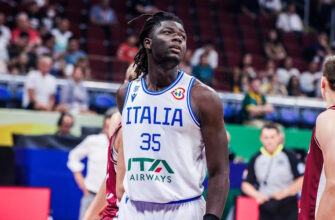The global transfer market in women`s football continues its dynamic ascent, punctuated by a landmark move: U.S. women`s national team winger Alyssa Thompson is reportedly on the cusp of joining English powerhouse Chelsea FC. This imminent transfer, with a rumored fee exceeding $1 million, is far more than just a player changing clubs; it`s a profound statement on the sport`s evolving economics, talent pathways, and the strategic decisions shaping the careers of its brightest stars.
The Ascent of a Prodigy
Alyssa Thompson`s journey has been nothing short of meteoric. From dominating boys` youth academies to becoming the No. 1 pick in the 2023 NWSL Draft as a high school player – a move that cost Angel City a substantial $450,000 to secure – she has consistently demonstrated a rare blend of pace, skill, and fearless attacking prowess. Her impact was immediate, securing a spot on the USWNT for the 2023 FIFA Women`s World Cup and quickly establishing herself as Angel City`s most potent offensive weapon.
In just two and a half NWSL seasons, Thompson has tallied 15 goals and 11 assists, showcasing a versatility to both find the net and create opportunities for teammates. Her 2025 season has been particularly impressive, defying an early 2024 back injury to spark MVP conversations, reaffirming her status as a generational talent years ahead of her prime.
A Million-Dollar Milestone: Redefining Value
The reported transfer fee for Thompson, hovering around $1.3 million, places her among the most expensive women`s football transfers in history. While these figures might still elicit a wry smile from those accustomed to the dizzying sums in the men`s game, for women`s football, they represent a significant recalibration of player valuation and market power. It underscores a fundamental shift: top female athletes are increasingly recognized as valuable, tradable assets, capable of driving both sporting success and commercial interest. This growing financial muscle allows elite European clubs like Chelsea, and their NWSL counterparts, to compete globally for premier talent, pushing the boundaries of what`s possible in player acquisition.
Chelsea`s Strategic Play: Fortifying a Dynasty
For Chelsea FC, securing Thompson is a move laden with strategic foresight. The reigning WSL champions boast an already formidable attacking lineup, featuring stars like Sam Kerr, Lauren James, Guro Reiten, and Johanna Rytting Kaneryd. Yet, with recent injuries to key players such as Mayra Ramirez and Lauren James, Thompson`s arrival offers immediate depth, blistering pace, and a direct threat on the wing. Her capacity to play as a winger or a striker provides critical tactical flexibility.
Moreover, a five-year contract with Chelsea offers Thompson a level of club stability she hasn`t consistently experienced at Angel City, where she played under four different coaches in a relatively short span. This consistent environment, coupled with the opportunity to train and compete alongside world-class talents and under a highly structured system, is invaluable for the continued development of a 20-year-old talent destined for the sport`s highest echelons. It`s an investment in her prime, an acknowledgment of her potential to become a cornerstone of Chelsea`s future success.
Angel City`s Reckoning and NWSL`s Evolving Role
Thompson`s departure undeniably leaves a significant void for Angel City, a club currently embroiled in a playoff push. Losing their best player is a tangible blow to immediate sporting ambitions. However, the substantial transfer fee provides a crucial silver lining, offering the club considerable resources to reinvest in future player acquisitions and strengthen their squad. It`s a testament to the NWSL`s role as a formidable developer of talent, even if it sometimes means seeing its brightest stars venture overseas.
This transfer, alongside others of similar magnitude, forces the NWSL to grapple with its identity. Is it solely a destination league for the world`s best, or also a vital launching pad for American talent seeking diverse experiences and development opportunities abroad? The answer, it seems, is increasingly both. The league`s ability to produce players coveted by European giants validates its quality, but also highlights the ongoing challenge of retaining its marquee players against the allure of established European powerhouses.
USWNT Implications: A New Chapter for National Team Development
The USWNT, now under the stewardship of former Chelsea manager Emma Hayes, stands to benefit significantly from Thompson`s move. Hayes has consistently championed the holistic development of young players, and a challenging, stable environment at a top European club aligns perfectly with this philosophy.
Thompson`s trajectory within the national team has been equally dynamic. Following a 2024 hampered by injury, her 2025 season has seen her ascend from a bench-depth option to a key starter. With established forwards like Sophia Smith and Mallory Swanson navigating personal milestones (expecting children) and Trinity Rodman managing injuries, Thompson has seized the moment. Her move to Chelsea offers continued high-level competition and tactical refinement, crucial for her to cement her place as a permanent fixture in a revitalized USWNT attacking line. This isn`t merely a transfer; it`s a strategic placement for national team readiness.
Alyssa Thompson`s impending transfer to Chelsea is more than just a transaction; it`s a bellwether for the accelerating professionalization and globalization of women`s football. It symbolizes the increasing financial muscle of clubs, the expanding career horizons for players, and the intricate web of development and competition that now defines the sport. As the global market matures, such moves will only become more frequent, shaping the narratives and determining the champions of this rapidly evolving beautiful game.






